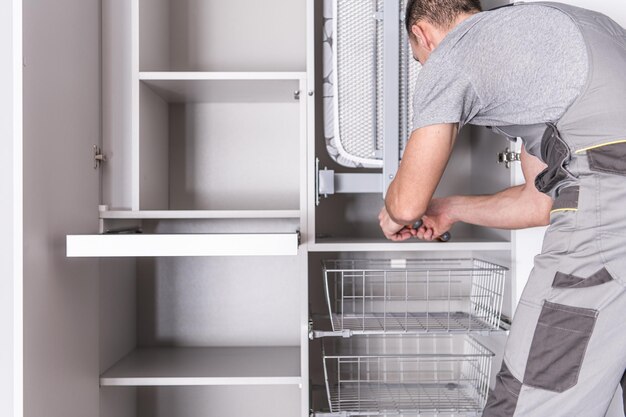Can You Lay Down a Refrigerator for Transportation? What You Need to Know
Moving a refrigerator from one place to another can seem straightforward, but there's more to it than meets the eye, especially when considering whether it can be transported lying down. Many homeowners and renters find themselves asking this question in the midst of relocations or appliance replacements. So, can you lay down a refrigerator for transportation? Let's dive deep into this topic and explore the pros, cons, and best practices to ensure your fridge arrives safely at its destination.
Understanding the Basics of Refrigerator Transportation
When transporting a refrigerator, the primary concern is protecting its internal components, particularly the compressor, from damage. For those unfamiliar with appliance mechanics, here's a quick overview:
The Role of the Compressor
- Functionality: The compressor is the heart of your refrigerator's cooling system. It pressurizes the refrigerant and circulates it through cooling coils.
- Potential Damage: When a fridge is laid down, oil and refrigerant can shift. If the compressor's oil doesn't settle back properly, the appliance may not cool effectively after being set upright.
The Refrigerant System
- Components: Comprised of coils that run throughout the appliance, these can be vulnerable to damage from accidental impacts.
- Importance: A leak or kink in these coils could lead to inefficient cooling or a breakdown.
Can You Lay a Refrigerator Down?
The short answer is: it's possible, but with caution. Here’s a closer look at the process and considerations:
Pros of Laying a Refrigerator Down
- Ease of Transportation: Laying a fridge on its side often makes it easier to maneuver through doorways and tight spaces.
- Vehicle Fit: It may be necessary if the vehicle doesn't have sufficient height for an upright position.
Cons of Laying a Refrigerator Down
- Potential Damage: As mentioned, oil can drain away from the compressor, increasing the risk of malfunction.
- Risk of Leakage: Refrigerant or oil leaks can occur if not handled properly.
- Warranty Concerns: Some manufacturers’ warranties become void if appliances are transported horizontally.
Best Practices for Horizontal Transportation
If laying your refrigerator down is unavoidable, follow these guidelines to minimize risks:
Preparation Steps
- Empty the Fridge: Remove all contents, including shelves and drawers, to prevent damage during transit.
- Secure Doors: Use rope or tape to keep doors closed, preventing them from swinging open during movement.
- Protect the Exterior: Wrap the appliance in moving blankets to safeguard against scratches and dents.
Choosing the Right Side
- Manufacturers’ Recommendation: Refer to the owner's manual for specific advice, but generally, it's safest to lay the fridge on the side opposite to the compressor lines.
After Transportation
- Time to Settle: Once positioned upright, wait several hours (typically 24) before plugging it in. This allows oil to settle back into the compressor.
- Check for Damage: Before powering on, inspect for any visible issues or unusual sounds.
Alternatives to Laying a Refrigerator Down
When possible, opt for these alternatives to ensure a safer transport:
Upright Transport
- Benefits: Keeps components in their intended state, reducing damage risk.
- Challenges: Requires a vehicle with enough vertical space, such as a truck.
Professional Movers
- Expertise: They have the skills and equipment to handle large appliances safely.
- Peace of Mind: Reduces personal liability and potential warranty voids.
Renting a Suitable Vehicle
- Large Vans or Trucks: Often a more practical solution than risking damage with incorrect positioning.
Identifying Common Transportation Mistakes
Understanding and avoiding these mistakes can save both time and money:
Mistake 1: Rushing the Process
- Consequence: Hastily moving a fridge can lead to mishandling and increased damage risk.
- Solution: Plan in advance and allocate sufficient time for the move.
Mistake 2: Ignoring Manufacturer Guidelines
- Consequence: This may void warranties or cause unintentional damage.
- Solution: Always consult the manual or manufacturer support for advice.
Mistake 3: Improper Vehicle Choice
- Consequence: Using vehicles with inadequate space increases transport risk.
- Solution: Assess the fridge dimensions and obtain a suitable vehicle.
Deciding on the Right Approach
Consider the following factors when deciding whether to lay your fridge down or keep it upright:
Influential Factors
- Distance of Move: Longer distances can exacerbate positioning issues.
- Weather Conditions: Extreme temperatures can affect fridge functionality post-transport.
- Fridge Model and Age: Older models or specific designs might have additional transport restrictions.
Summary of Key Takeaways
To help ensure a successful refrigerator move, remember these points:
- 🗝️ Key Considerations: Always prioritize upright transport if possible.
- 🛠️ Preparation Is Crucial: Properly securing and protecting the appliance reduces risks.
- ⏳ Post-Move Patience: Allow time for components to settle before reactivating.
- 🚛 Explore Alternatives: Professional services or appropriate vehicles can be worthwhile investments.
By understanding these principles and following best practices, you’ll be better prepared to tackle refrigerator transportation confidently and safely. Remember, taking the necessary precautions not only protects your appliance but also extends its longevity.
